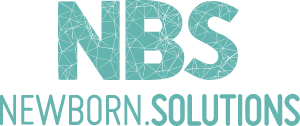Project description
A driving force behind quality healthcare is the adoption of medical technology that enables clinicians to provide better patient care, by reducing medical errors and improving stronger support for clinical decision-making. These technologies facilitate the implementation of care guidelines, by reducing practice variations, conduct systematic audits for quality assurance, and optimize evidenced-based care for common conditions.
Medical technology is a broad field where innovation plays a crucial role in sustaining health. This domain, as well as many other specialized scientific and technological domains, is developing a specific set of solutions based on ad-hoc ICT technologies and platforms.
In this case around what is known as “medical devices” with strong validation and certification requirements. These devices include software and hardware components in order to implement efficiently the required solutions to niche problems with a personalized (so flexible) approach.
This project is addressed to the implementation of algorithms using both predictive and machine learning models tailored for diagnosis support systems in the medical/health domain implemented in embedded high-performance computing platforms to achieve real-time processing of the dynamically collected sensor data coming from user (clinician+pacient) interactions and multimodal sensors and actuators involved in the medical instrument procedure.
Such Cyber-Physical Systems will be applied to medical application scenarios such by means of the Neosonics platform, componse of ultrasonics transducer, together with its digitalisation and control, plus an embedded GPU with the corresponding UI interface.
The research focuses in the development of a flexible computing architecture to implement real-time deployment of algorithms that handles optimally transducer data to provide a decision suport system for clinicians related to non-invasive detection and monitoring of infections in serous body fluids, as a part of the growing discipline being called Intelligent Acoustic Systems and Applications.
The goal is to develop new solutions that solve such medical problems using a scientific methodology by combining a set of methods, components and tools that start in sensor interfacing that generates multi-view data (e.g. US data from different signal freqüencies and/or intensities) and end in the real-time computation using embedded high-performance computing techniques.
This work requires the collaboration in projects with multidisciplinary teams of scientific clinicians and engineers that will cover all required research aspects. This includes disposing a sufficient data-set for ML training and the capability to build new ones.



